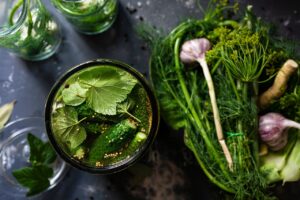
Food textures can add to the enjoyment of eating so be sure to try all of them.
Common Food Textures
Do you notice the crunchy or squishy texture of a food when you eat it? Do you cook pasta to ‘al dente’ texture? Do you prefer a soft and juicy pear or one that is unripe and crunches like an apple? Have you overcooked a fish filet and noticed that its texture is tough? Crumbly, firm, mushy, creamy, chewy are a few other texture terms that we can use to describe a food, depending on what it is. For each of us, the food’s texture can add to the enjoyment of the eating experience.
Same Food – Different Texture – Similar Nutritional Value
Though food textures can vary drastically, same food nutritional values are likely unless there are added ingredients. Here are 3 options to think over:
Raw carrot sticks or Cooked carrots: Assuming the carrots are peeled in both of these cases, there will be few nutritional differences. Cooking carrots in a big pot of water, boiling them until soft, may reduce the vitamin value very slightly; however, the fiber content will stay the same. If you or a family member prefer cooked carrots then cook them in less water and quickly to preserve all the nutrition.
Sautéed kale or Kale chips: Assuming the amount and kind of oil added is the same in both of these cases, the nutritional values will be similar. The method of cooking varies in this example – stirred in a hot skillet until soft vs. roasted/baked in a hot oven until crunchy.
Canned salmon or Smoked salmon: Assuming both of these are either from wild salmon or farm raised salmon, the nutritional values will be similar other than sodium content. Canned salmon has only about half as much sodium as hot-smoked salmon and the soft, smooth texture of canned salmon is very different from the ‘flaky’ texture of hot-smoked salmon.
Recipe: Fresh Cucumber Pickles – 4 servings
Here’s a cucumber recipe that will add a refreshing crunch to any meal, and kids can help by measuring the ingredients and stirring, with supervision.
- 1 medium Cucumber, 6-7 inches long
- ¼ cup Vinegar, apple cider or red wine
- ¼ cup Water
- 1 teaspoon Sugar
- 1/8 teaspoon Salt
- Pinch Pepper, black or white
- 1 tablespoon Fresh dill or parsley, or both, minced (optional)
- Wash cucumber in cool tap water. Shake off extra water. Peeling is optional.
- Thinly slice cucumber then place slices in a small-medium glass bowl or container.
- Measure and stir together the vinegar, water, sugar, salt, pepper, and minced fresh herbs (optional) in a cup or small glass.
- Pour liquid mixture over the sliced cucumbers and stir gently.
- Cover the bowl or container, refrigerate it, and allow flavors to develop for 4 hours or up to 48 hours.
Approximate calories per serving: 20
Here are a few more ways to use crunchy cucumbers:
Try a New Texture
Choosing a wide variety of foods brings a wide variety of nutrients to you. When cooking, there’s always an opportunity to try new textures in your meal or as an option on the family table. Who knows…the new texture could become a new favorite. While pondering food textures here is a free resource for Mediterranean Meals and Recipes, too.